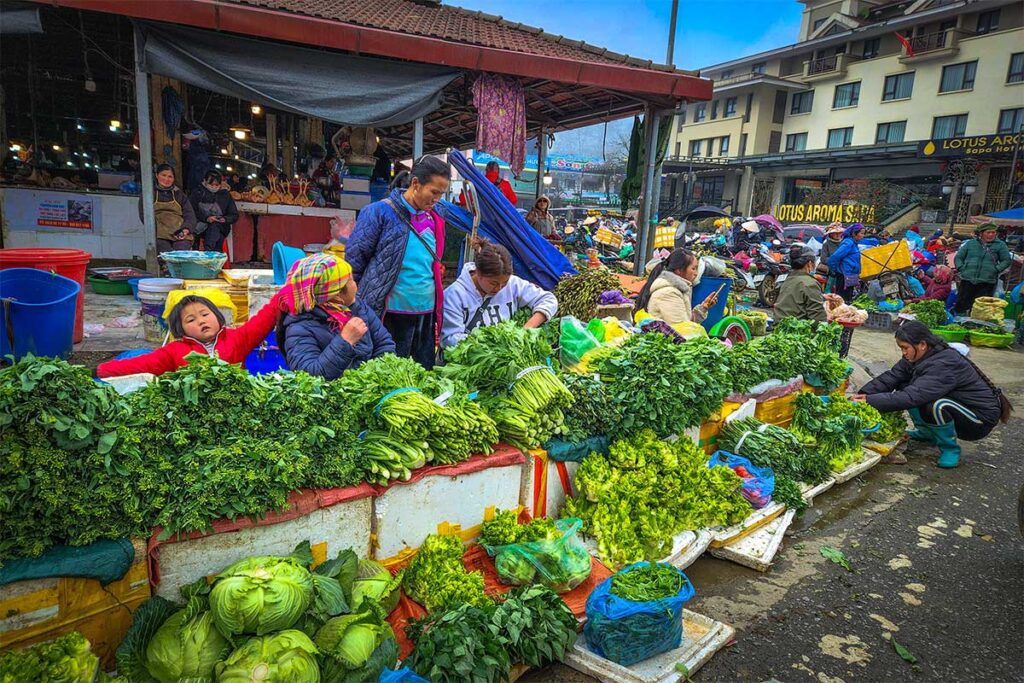What is the Sapa Market Like?
Sapa Market is first and foremost a local market, where residents shop daily for fresh vegetables, meat, tofu, herbs, and household supplies. In Vietnam, daily market visits are a way of life—and this market reflects that rhythm more than any tourist attraction. You’ll see a mix of vendors, including ethnic minority women—especially on weekends—but it’s not the same as the weekly minority markets in surrounding villages, like the famous Bac Ha Market.
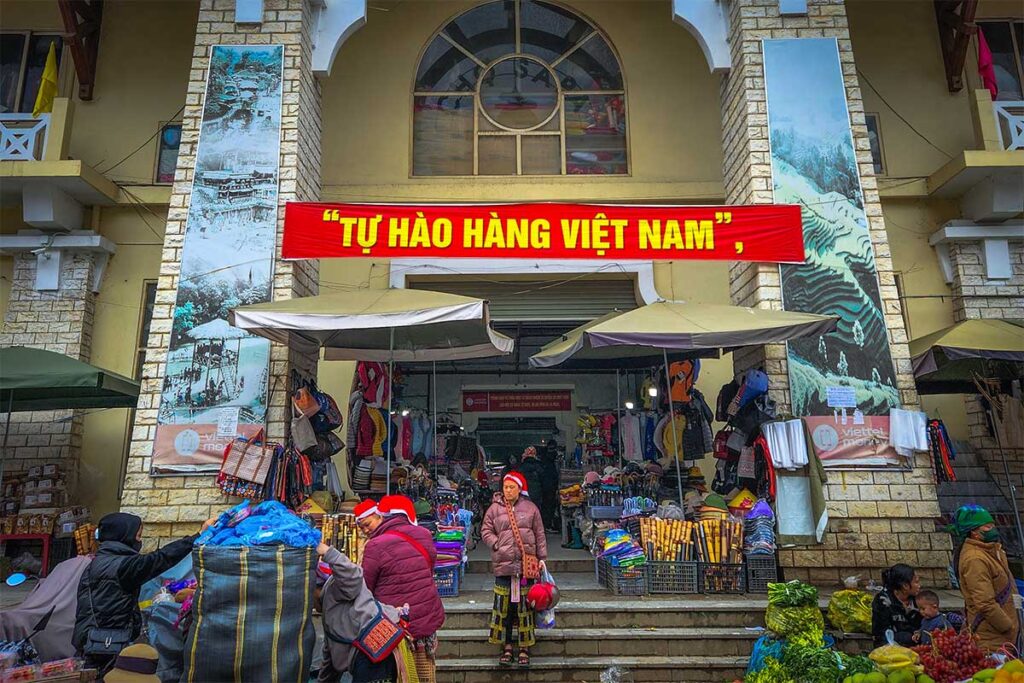
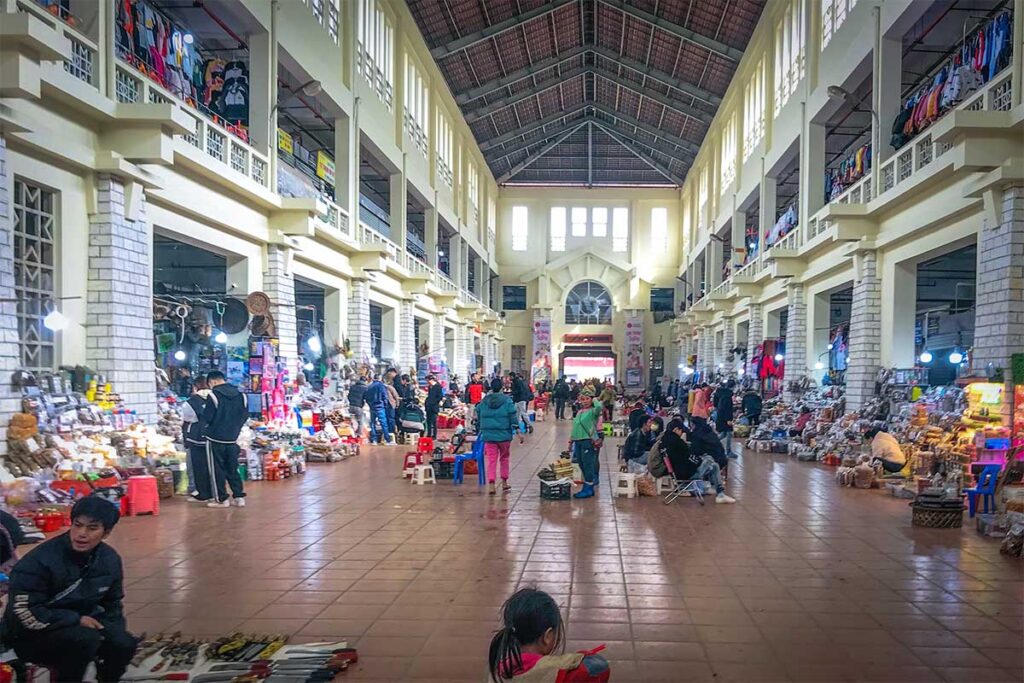
As Sapa has grown more popular with travelers, parts of the market have adapted, adding stalls that sell souvenirs, clothing, and tourist-oriented goods. In the evening, one section becomes the Sapa Night Market, shifting fully toward visitors with handicrafts, snacks, and colorful displays.
Where is Sapa Market?
Sapa Market is located on the eastern edge of town, close to the main bus station and just a short walk from Sapa Lake.
From most hotels in the town center or on the western side near Muong Hoa Valley, it’s about 1.5 to 2.5 km—walkable, but the distance varies depending on where you’re staying.
If the walk feels too long, you can take a taxi or hop on one of Sapa’s open-air electric carts, which are a scenic and convenient way to get around. It’s easy to combine a market visit with other sights nearby, such as the Sapa Stone Church, Ham Rong Mountain, and a stroll around the lake.
Visiting information
Address
Chợ Sapa (Sapa Market), Đường N1, Sapa Town (Google Maps)
Opening Hours
- Main market: Open daily from around 6:00 AM until late afternoon (morning most busy with locals)
- Night market: 6:30 PM – 11:30 PM (only a section of the market operates at night, focused on tourists)
What can you find in Sapa Central Market?
1. Fresh produce & Local food
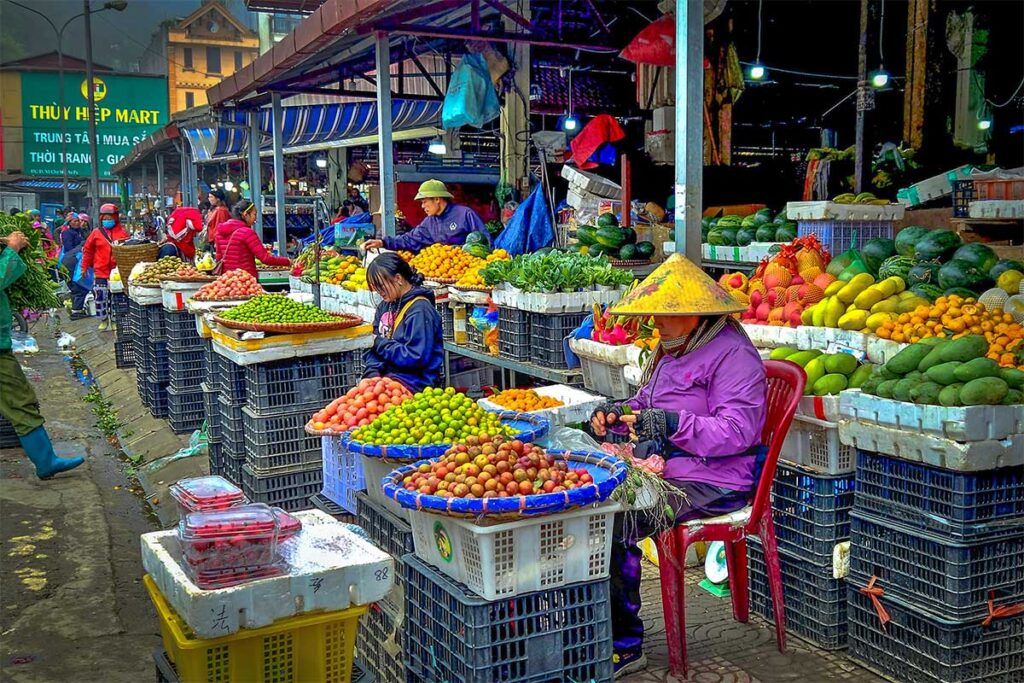
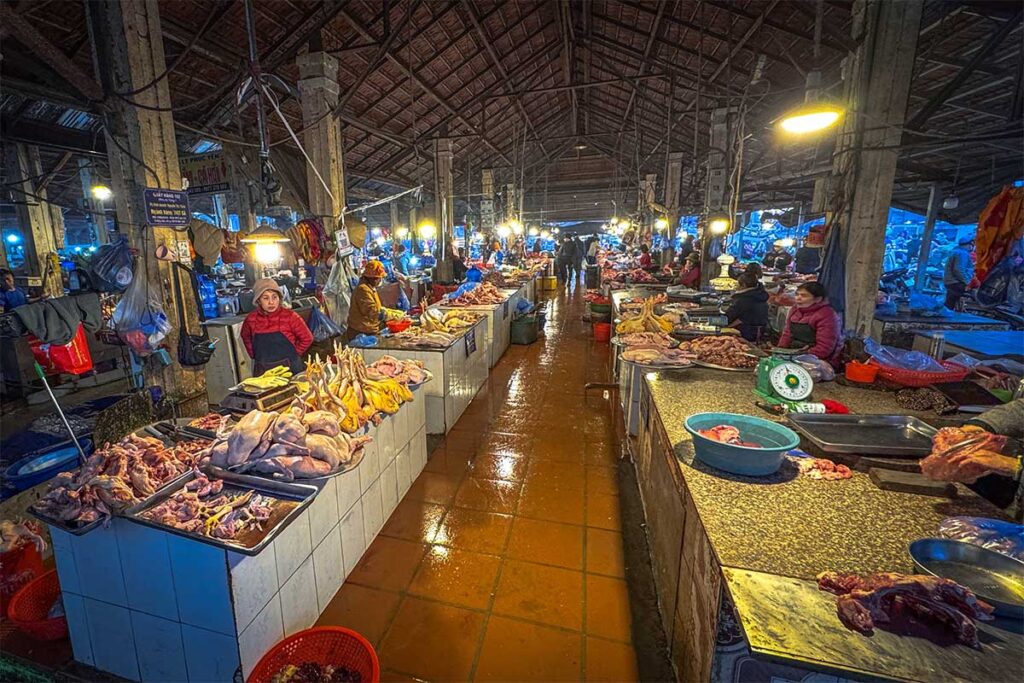
The ground floor of the market is filled with seasonal produce—everything from herbs and mountain vegetables to tropical fruits and locally raised meats. This is where local residents shop for their daily ingredients, and it gives a great insight into what people in Sapa actually eat. You’ll also spot ingredients typical to northern mountain cuisine, like wild mushrooms, cardamom, and fermented bamboo shoots.
2. Clothing, shoes & Household items
One section of the market sells clothing and everyday household goods, mostly geared toward local shoppers. Expect basic fashion, some outdoor gear knock-offs, and a mix of locally made and imported (mostly Chinese) products. It’s not a souvenir hotspot, but you might come across useful items—especially if you forgot to pack something for your trip. Bargaining is expected, and prices vary depending on how touristy you look.
3. Handicrafts & Ethnic-style products
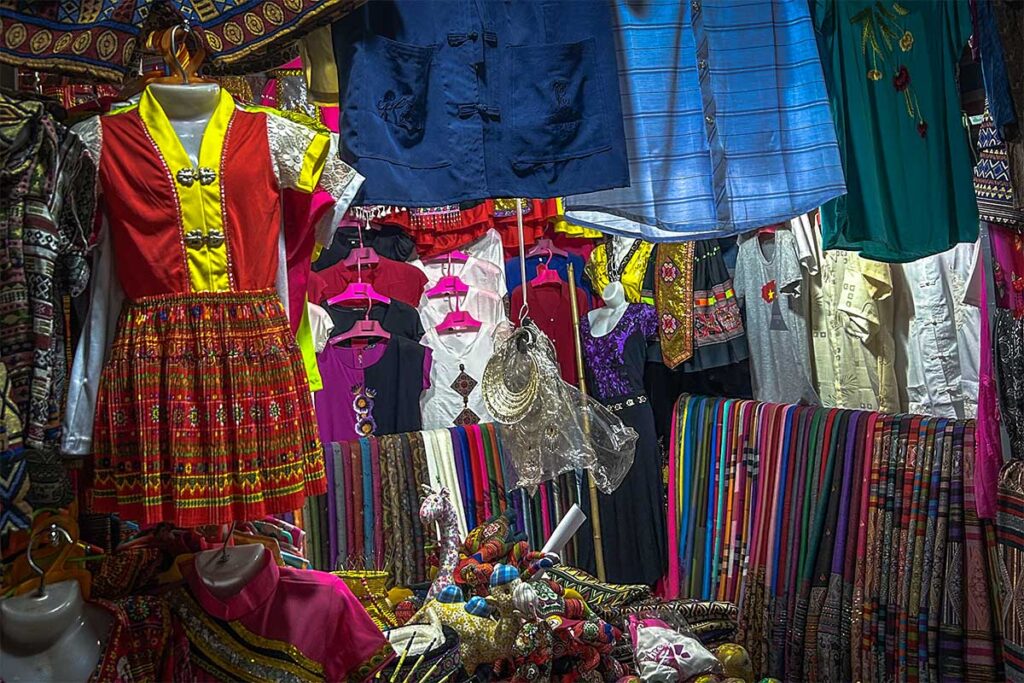
You’ll find a number of stalls selling brocade bags, scarves, and embroidered goods—some made locally, others mass-produced. While it may look like ethnic craft, not all of it is handmade or comes from the surrounding villages. If you’re serious about buying authentic textiles, consider visiting community-run cooperatives or shopping directly in ethnic minority villages outside of town.
4. Food Stalls & snacks
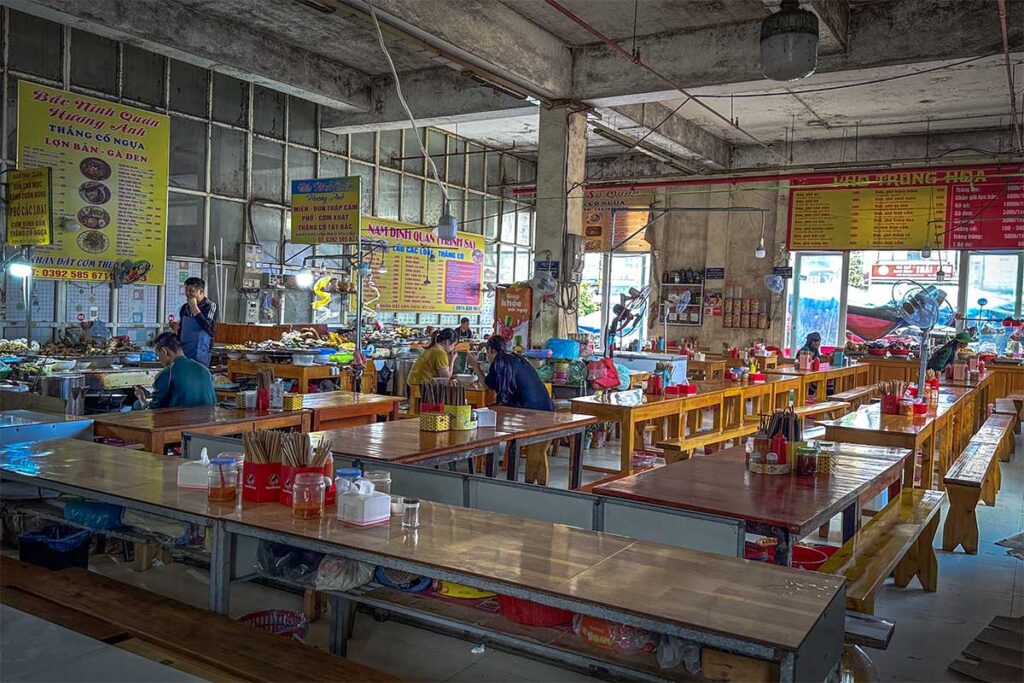
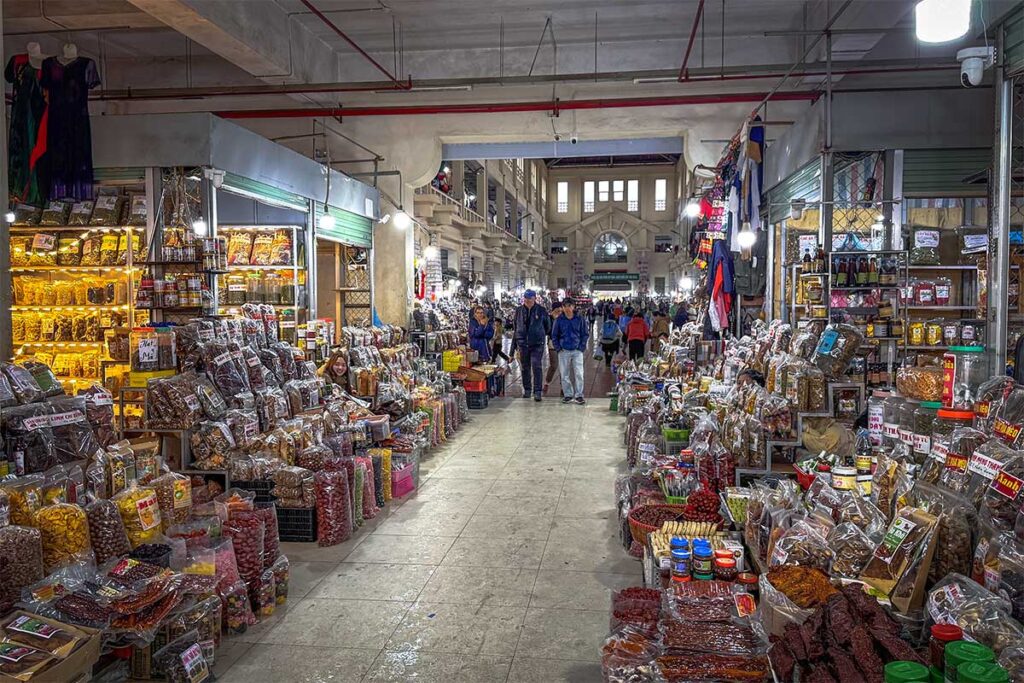
The market has a small food court where locals grab breakfast or lunch—usually simple dishes like pho, sticky rice with sesame, or grilled skewers. It’s a casual, plastic-chair setup. Hygiene can vary, so look for the busiest stalls and follow the locals’ lead. Don’t expect English menus, but pointing and smiling usually works. You might also see stalls selling local specialties like thắng cố (a traditional highland stew), though it’s more common on weekends.
Sapa Night Market
In the evening, a section of the market transforms into the Sapa Night Market — a separate experience focused entirely on tourists. You’ll find rows of stalls selling souvenirs, brocade textiles, clothing, and snacks. While it lacks the everyday local vibe of the daytime market, it’s a lively place to browse after dinner or pick up gifts.
For more details, photos, and tips, see our full guide: Sapa Night Market
Tips for visiting Sapa Central Market
- Visit on a weekend – Saturdays and Sundays are more lively, with more ethnic minority vendors present.
- Go early – The freshest produce and most active atmosphere are in the early morning.
- Bring cash – Most vendors don’t accept cards or mobile payments.
- Bargain politely – Haggling is expected, but do it with a smile and good attitude.
- Check the night version – If you’re around in the evening, the night market offers a different (touristy) experience.
Is Sapa Market worth visiting?
Sapa Central Market (the town market) — isn’t the place to look for remote, traditional ethnic minority culture. It’s more of a mix: part local grocery hub, part souvenir stop.
Still, it offers a glimpse into daily life, with locals shopping for fresh ingredients and vendors selling everyday goods alongside more tourist-focused stalls.
Come with the right expectations — it’s not a highlight like the weekend ethnic markets outside town, but if you’re staying nearby, it’s an easy and worthwhile stop.
Ethnic minority markets around Sapa
What is a minority market?
Ethnic minority markets are held weekly in remote villages, where communities like the Hmong, Dao, and Tay come together to trade goods and socialize. These markets are known for their vibrant traditional clothing, handmade items, and authentic atmosphere.
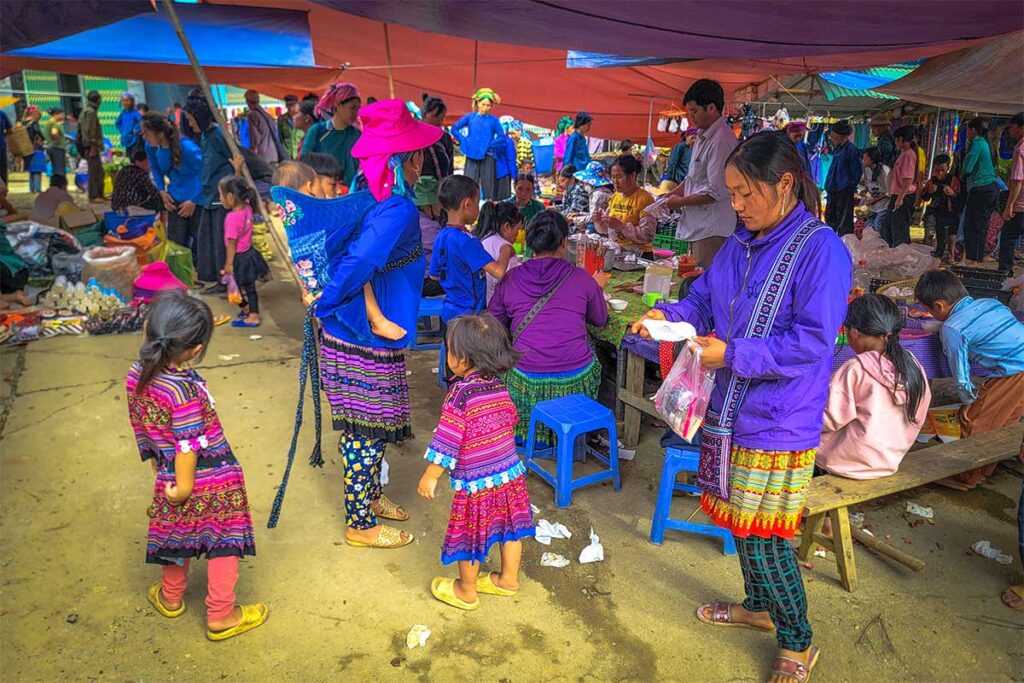
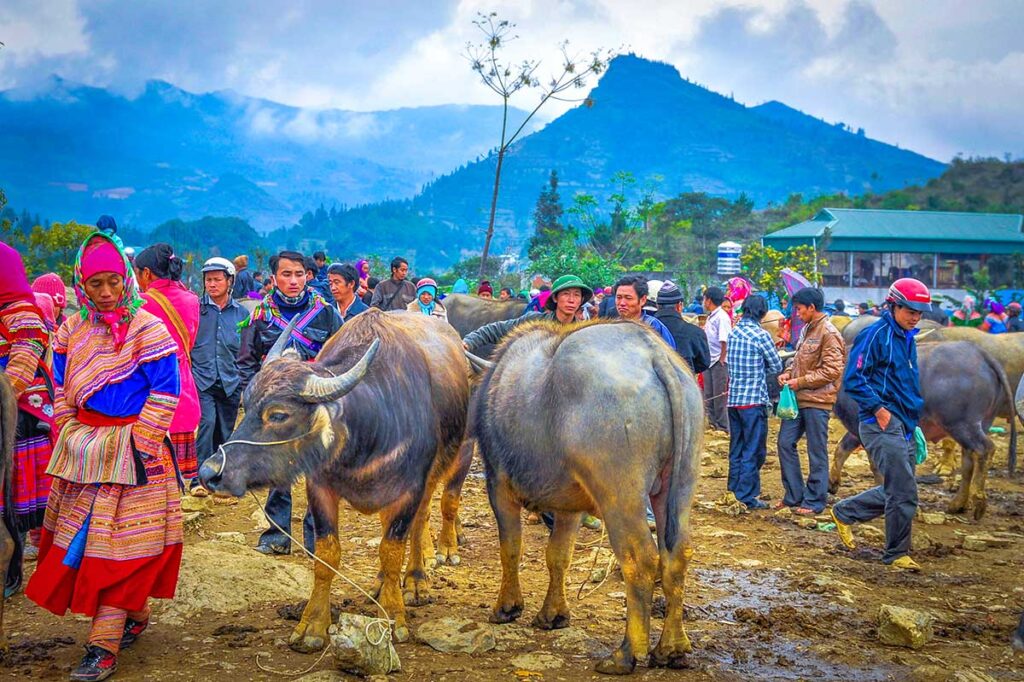
Unlike the daily Sapa Central Market, they take place once a week and are usually located far from tourist areas — making them harder to reach, but culturally richer.
Examples of weekly markets Near Sapa
- Bac Ha Market (Sunday) – Large, popular, and easy to visit with tours.
- Can Cau Market (Saturday) – Known for its livestock section and dramatic hillside setting.
- Coc Ly Market (Tuesday) – Can be combined with a scenic Chay River boat trip.
- Lung Khau Nhin (Thursday) – Remote and great for photography.
- Muong Hum Market (Sunday) – Peaceful valley setting with few tourists.
- Cao Son Market (Wednesday) – Small, very local, and off the beaten path.
See our full guide: Best Markets around Sapa
